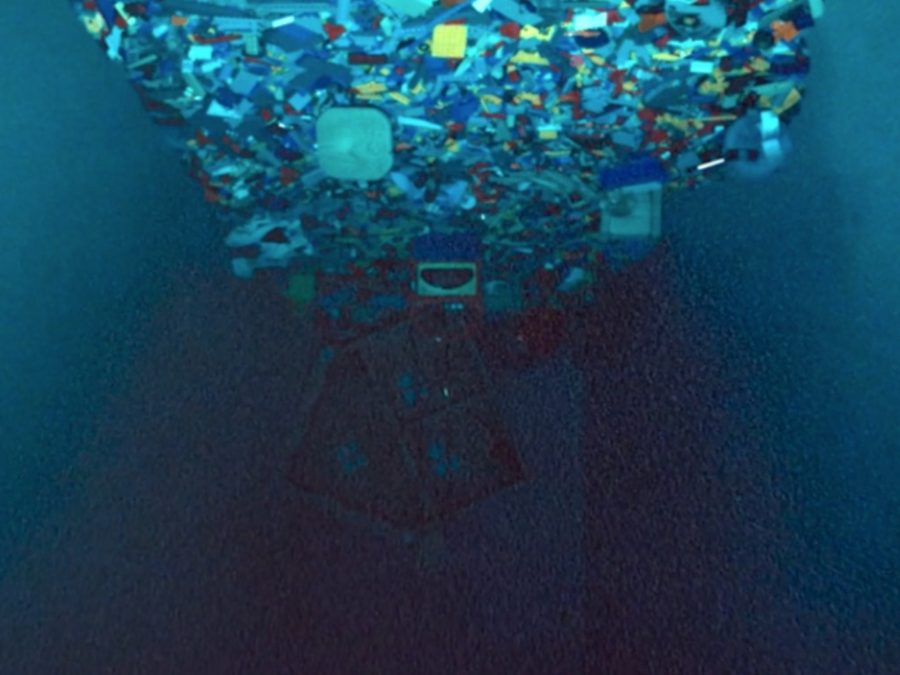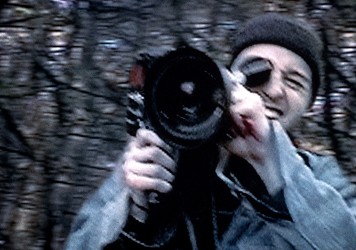
Sometimes, I wish there had been a tiny camera attached to the side of my head. If there was then I wouldn’t need to struggle with the fickle nature of memory, I could simply just scrub through all the footage, speeding through the parts that don’t matter and slowing down to one frame per second for the important sections. I could even solve the linear nature of time. I could move back and forth between then and now as much as I pleased. But of course, the nature of recorded footage is that it isn’t an objective viewpoint.
What makes the nature of the found footage horror form appealing to filmmakers is that it means they can get away with shooting around the things that a normal horror film would show. The Blair Witch herself never appears in The Blair Witch Project (partly by accident, true, but if their plan to show her had gone through the film might very well have lost its uncanny impact). In Adam Wingard’s Blair Witch from 2016, we do see the Blair Witch, and the film ends up feeling comparatively limp. In that film, the characters lost in the wood have high definition cameras and drone coverage. That could be viewed as the end point of a certain trend for the genre, the post-Paranormal Activity boom of studio found footage horror films that generally used the format because it made money, rather than as a limiting experiment.
___STEADY_PAYWALL___
There are moments in Blair Witch that are effective – a great moment of sudden, gnarly body horror, for example, shatters through an already chaotic sequence – but nothing in there feels like it needs to be shot in the found footage manner beyond the simple fact that that’s how the original was shot. The film simply ignores the presence of the underrated previous sequel, Book of Shadows, which was more or less a traditional narrative feature. When Blair Witch came out to shrugs from the audience, it really did feel like found footage horror was over. Maybe the ‘screen life’ genre of Unfriended would fill its niche, but found footage itself seemed unlikely to continue on any scale.
That was, it turned out, a good thing. Obviously found footage films didn’t cease to be made. Rather appropriately, this is a narrative that I have constructed or projected looking back on the period – but comparing recent entries such as The Outwaters and Incantation, it does feel like people are approaching with different things in mind. The organic indie hit Skinamarink isn’t even technically a found footage film, but it’s impossible to talk about without invoking the genre.
All three of these films break very distinct rules, and both The Outwaters and Skinamarink are the first features of young, queer filmmakers. There’s a long running joke-slash-criticism of these sorts of films that asks why people don’t simply stop filming. The Outwaters leans into that specifically. Incantation breaks the logical formula, constructing a narrative that we the audience cannot possibly be seeing. Skinamarink, of course, is a found footage film without cameras. Instead, the shots take the form of coverage and character POV, with the action frequently happening around the edges of the images.

All three films centre on violence inflicted on children; Incantation generally being from the POV of the mother of a young girl who finally comes to live with her, Skinamarink being directly centred on a child’s view of the world and The Outwaters taking an adult man with a complicated relationship to his mother on a hallucinatory trip back to the route of his childhood. It’s a fascinating way of telling a story that, textually, is closer to a Xavier Dolan film than a straightforward horror film, and it still makes time for truly nightmarish, gut churning violence. The filmmaking technique both enhances and obscures the queerness at the centre of the story, but the fact is that going home does feel like being slowly pulled apart sometimes.
Skinamarink takes a similar difficult childhood and stretches it out – in that film, time becomes almost unbearably slow moving. It led to audience reactions that the film’s second half was simply too much. Not that it dragged exactly, more that at a certain point it became overwhelming. There was no forward momentum to the plot, only endless abstracted images and muttered words and the sounds of children crying. Which is, obviously, the real point of Skinamarink. It’s a machine entirely made to produce the horrible feeling of being a powerless child in a world that is at best ambivalent to you, and at worst actively antagonistic.
The concept of the queer child is a politically volatile idea right now. It always has been, but especially in the last couple years, the right wing imaginarium has settled on a dangerous campaign against queer people under the thin guise of protecting children from grooming (that is, being able to exist on their own terms). It’s fascinating then, that both The Outwaters and Skinamarink, two horror films interested in exploring the terror that is experienced by that child, would coincidentally arrive right now.
I don’t remember a lot of my childhood. Not that it was unhappy – at least, not all the time. I was an unhappy teen, certainly, but as a child I was fairly ignorant of my own identity. But I don’t really remember that time, and I feel estranged from it. Every now and then images or experiences will bubble up for me out of the past, but working out what is real and what was a dream can be difficult. Sometimes those experiences will be harrowing, like something out of one of these films. Sometimes they will be crushingly mundane. I wish I’d had a camera implanted in my little skull so I could know for sure. But as it is, I’ll just have to try to experience time as linearly, as most do. Going forwards, not looking back, not daring to.
Published 12 May 2023

A film critic traces the connections between philosopher Ludwig Wittgenstein’s escapist eccentricities and her own formative experiences as a cinephile.

By Anton Bitel
A young brother and sister face their worst fears in Kyle Edward Ball's inventive microbudget horror.

Directors Eduardo Sánchez and Daniel Myrick tell the story of how their freshman film project became a cultural phenomenon.